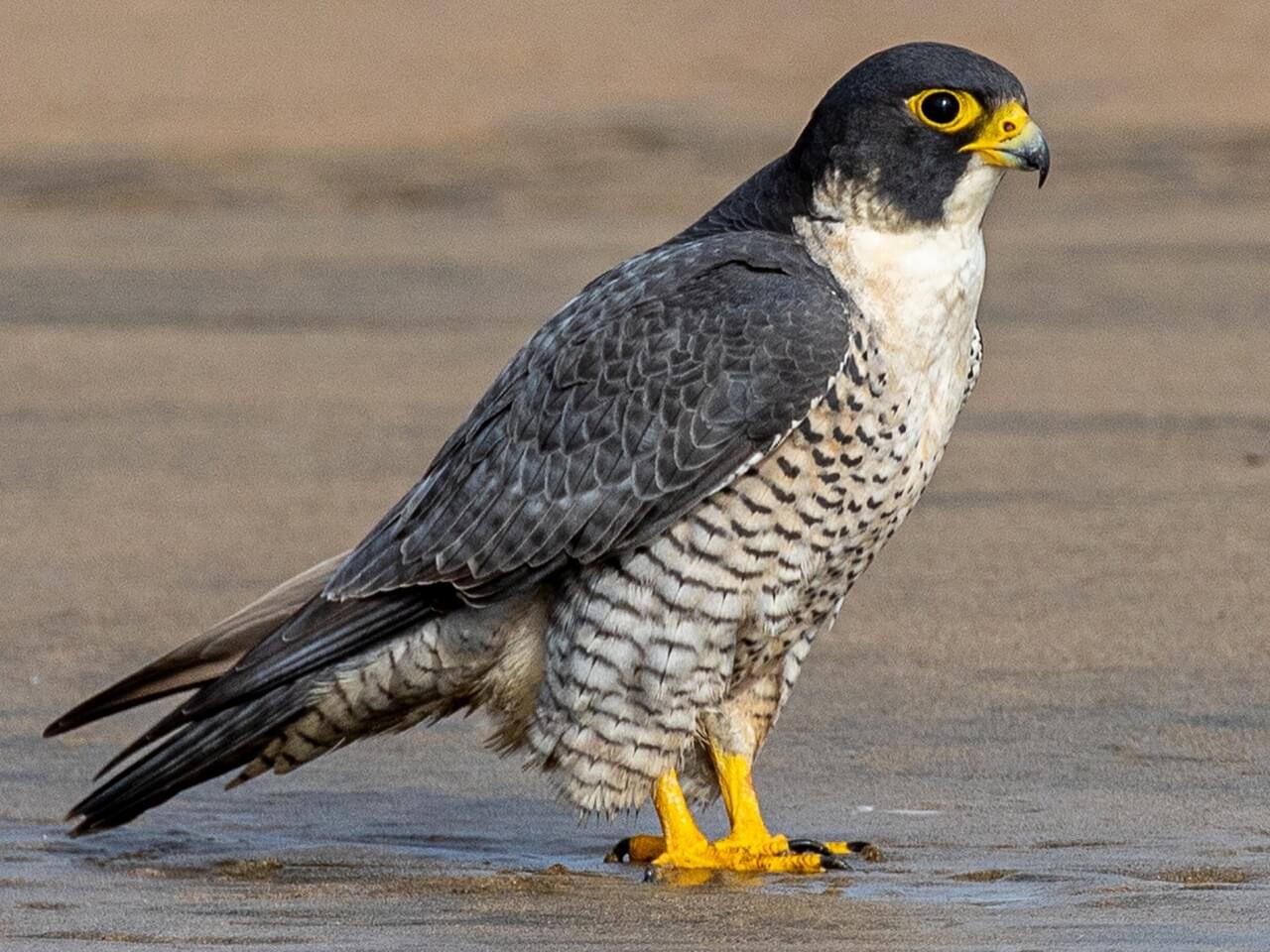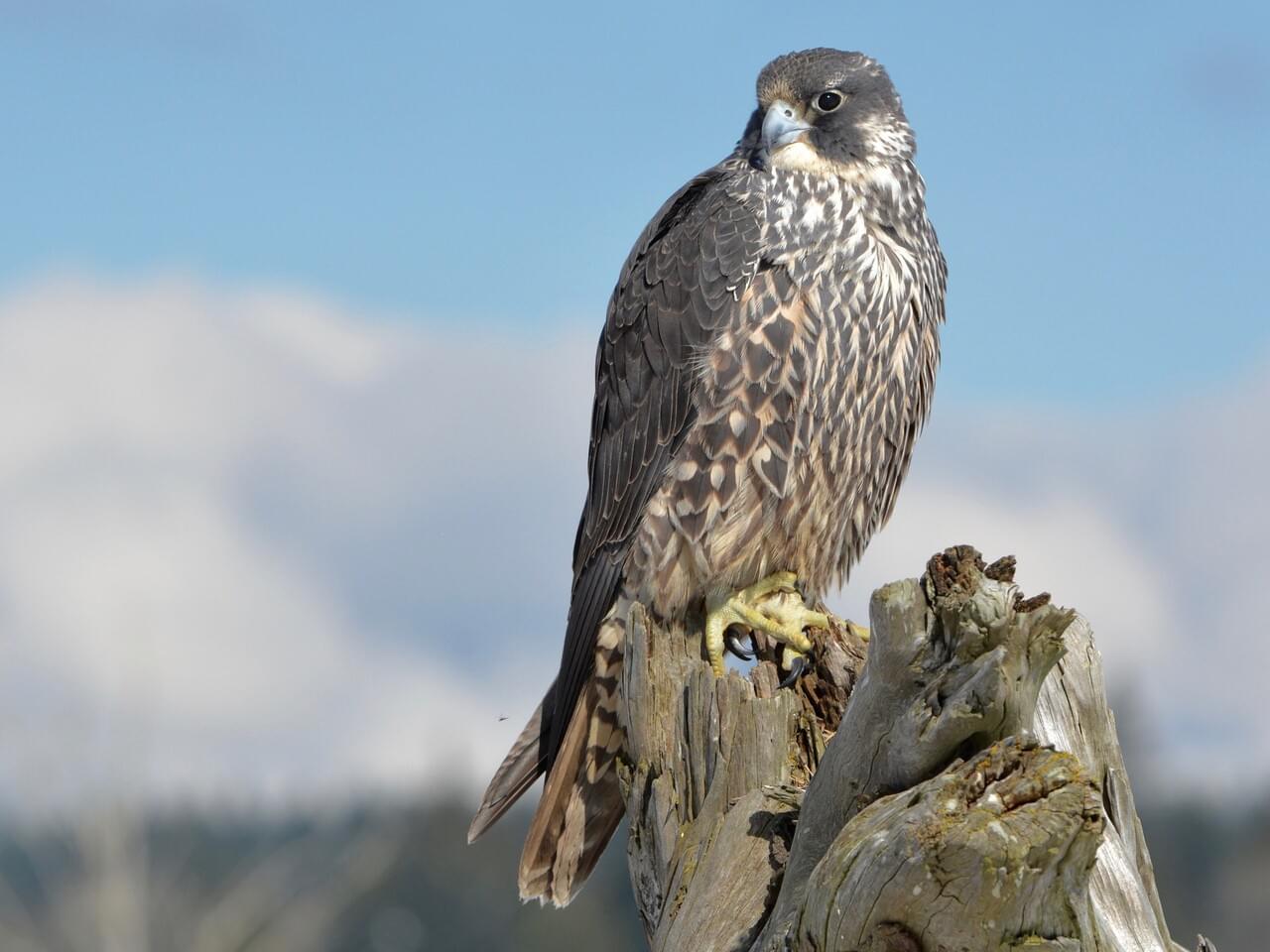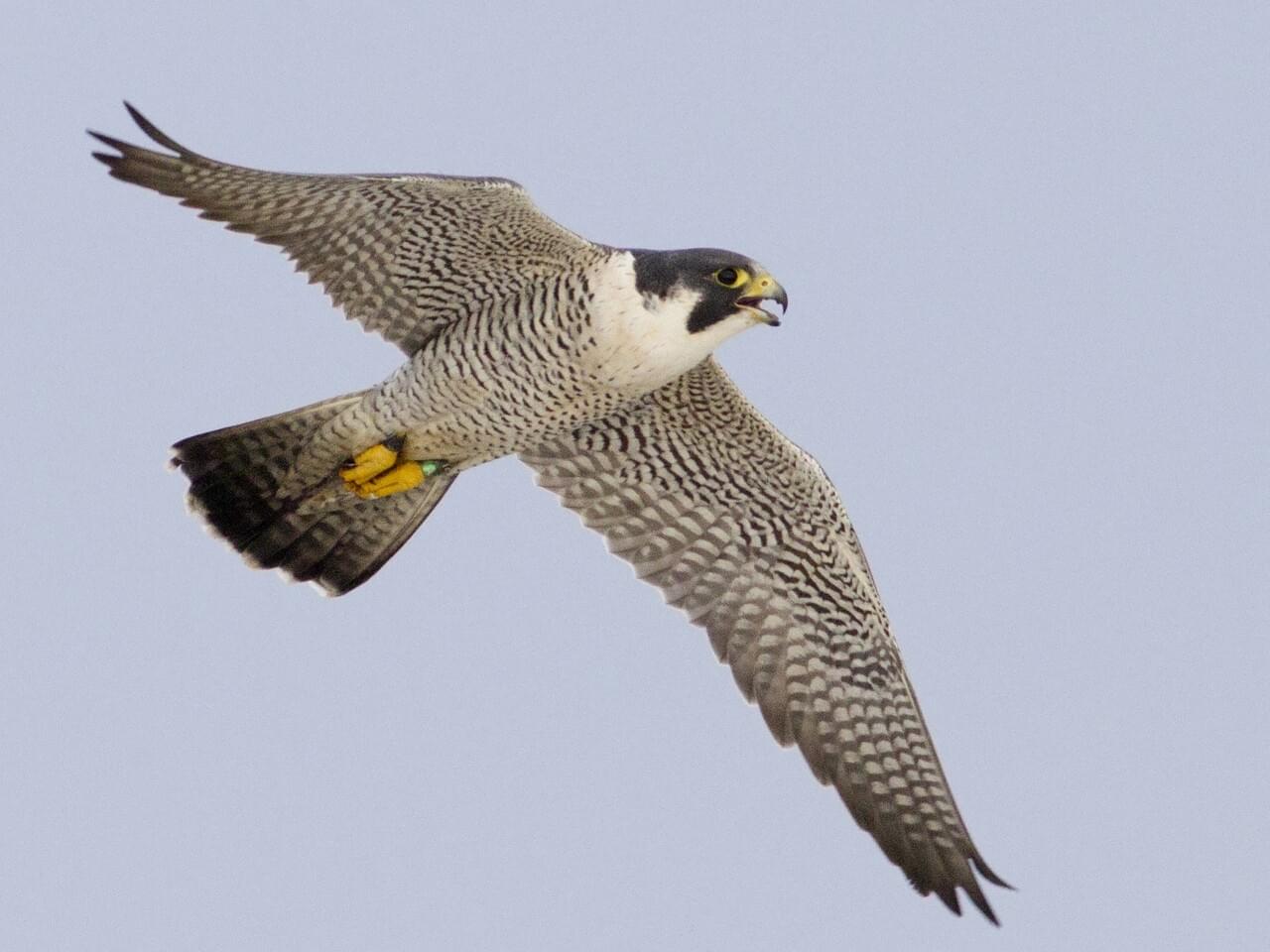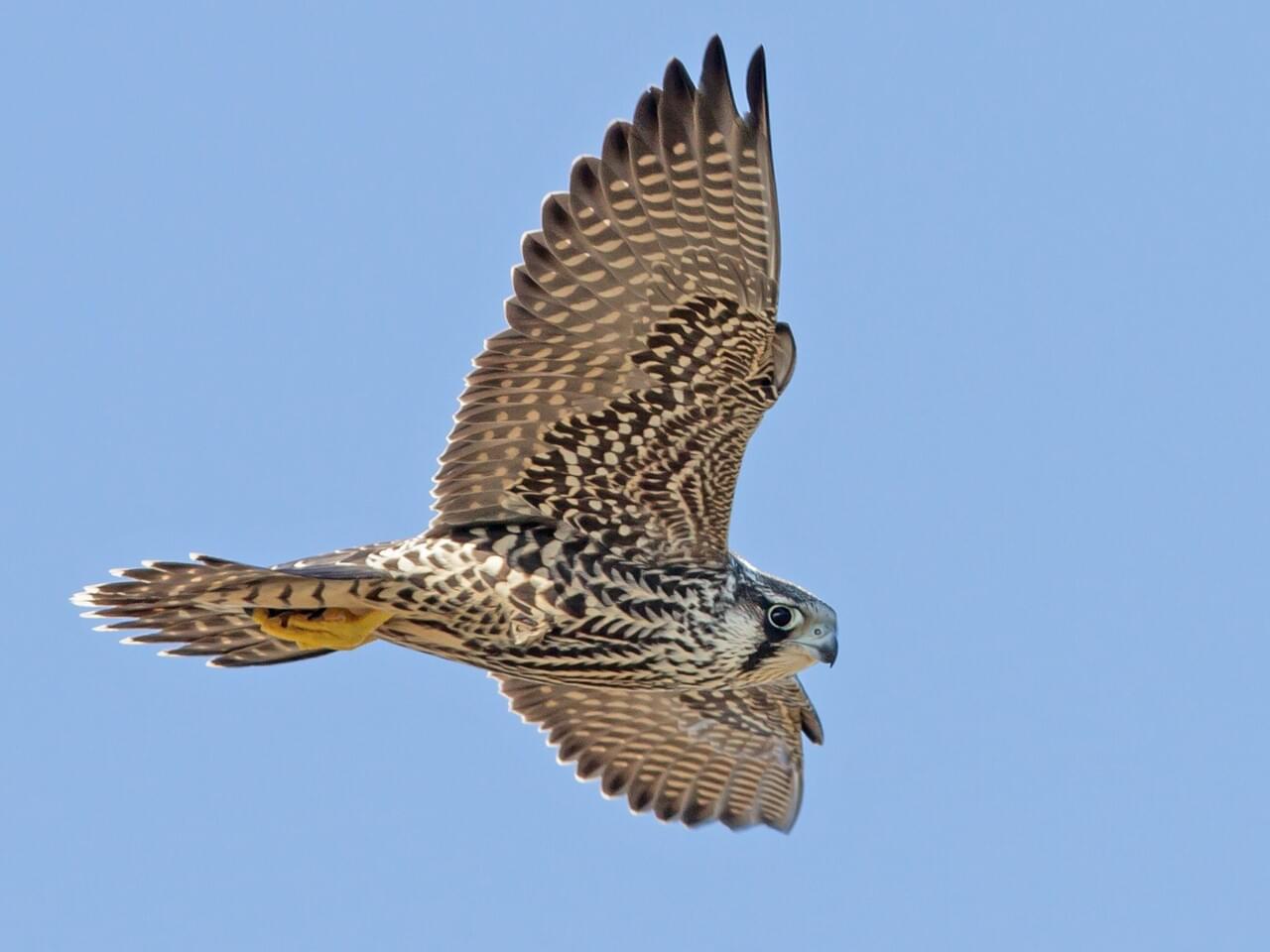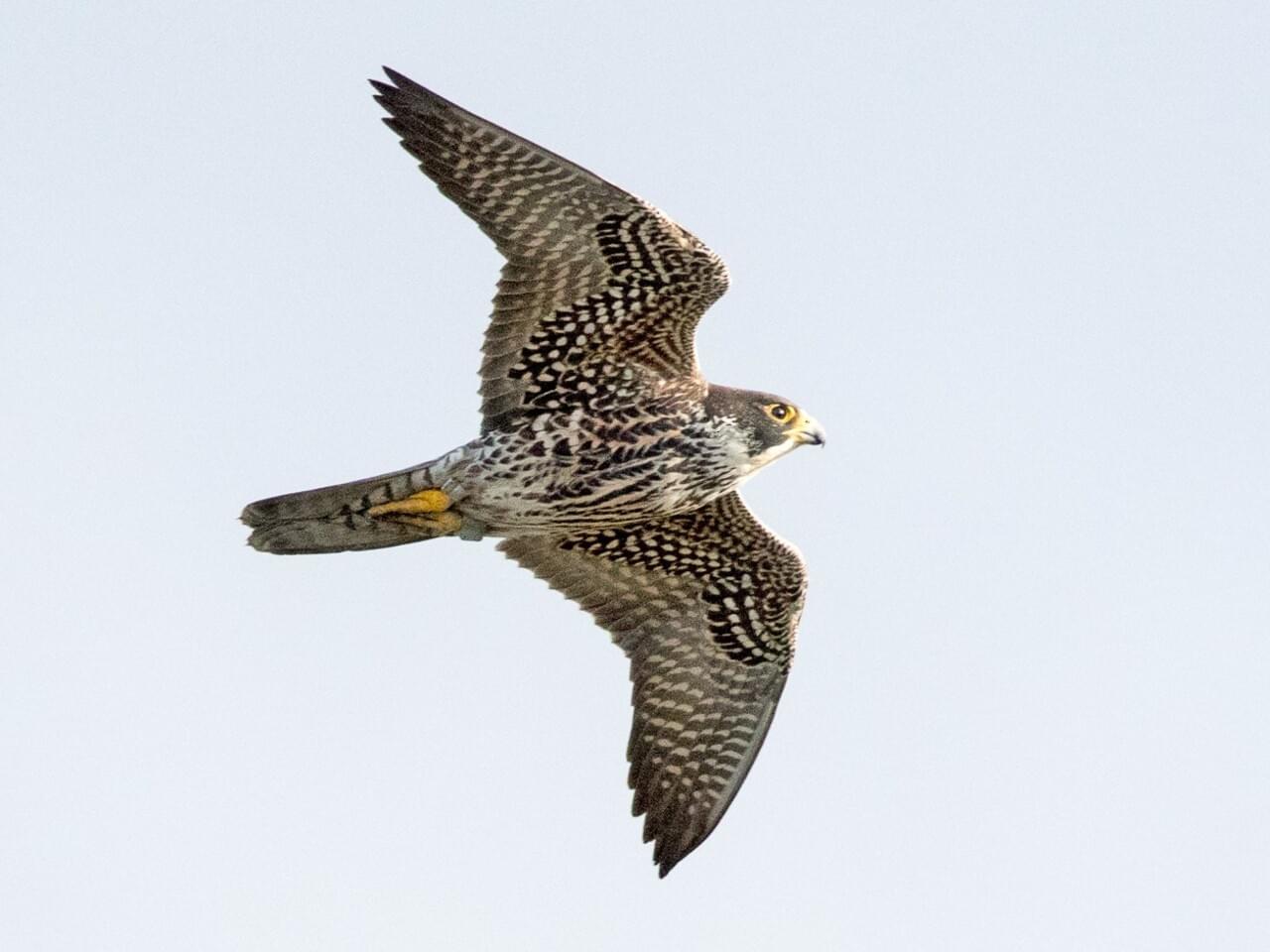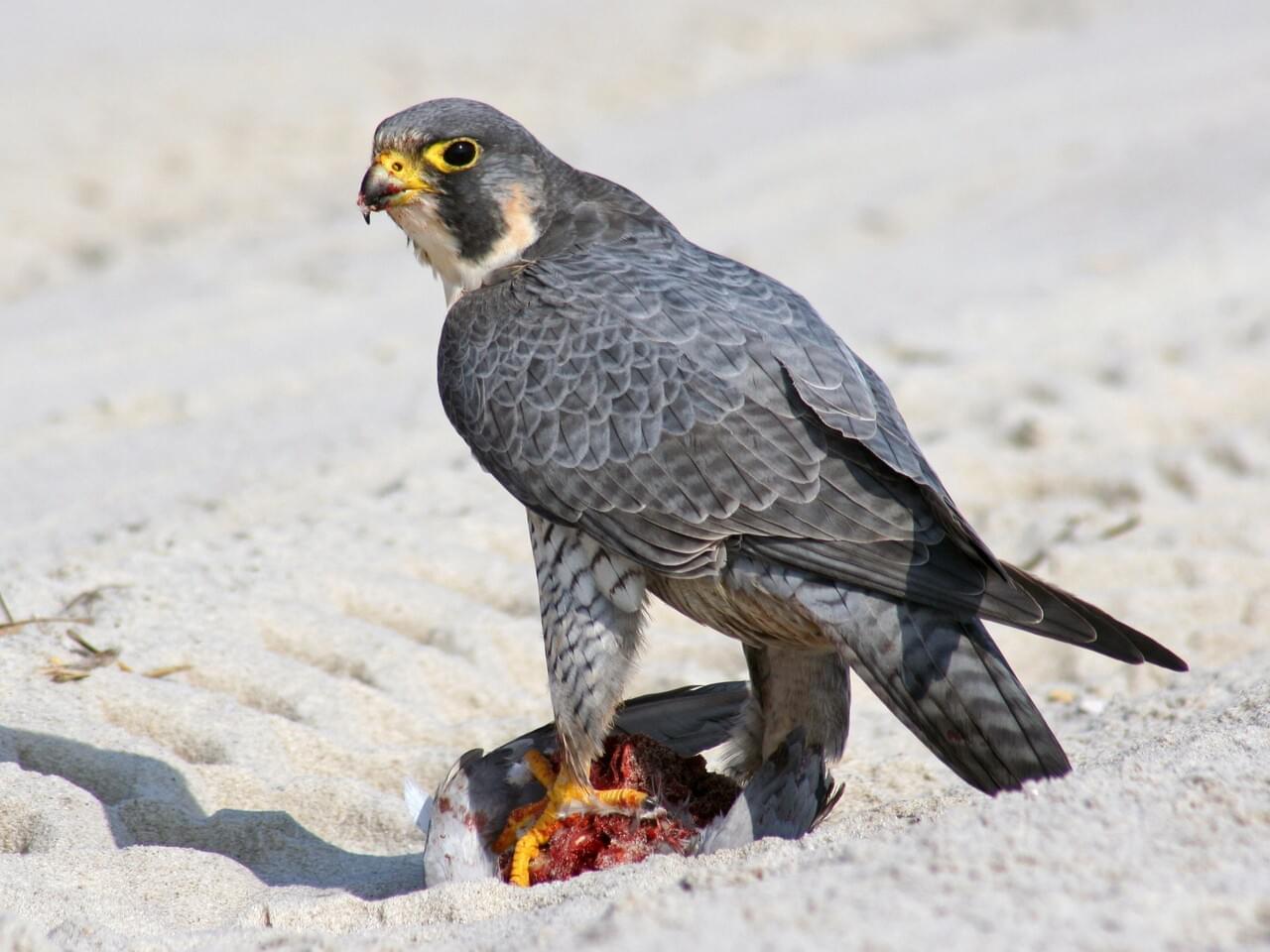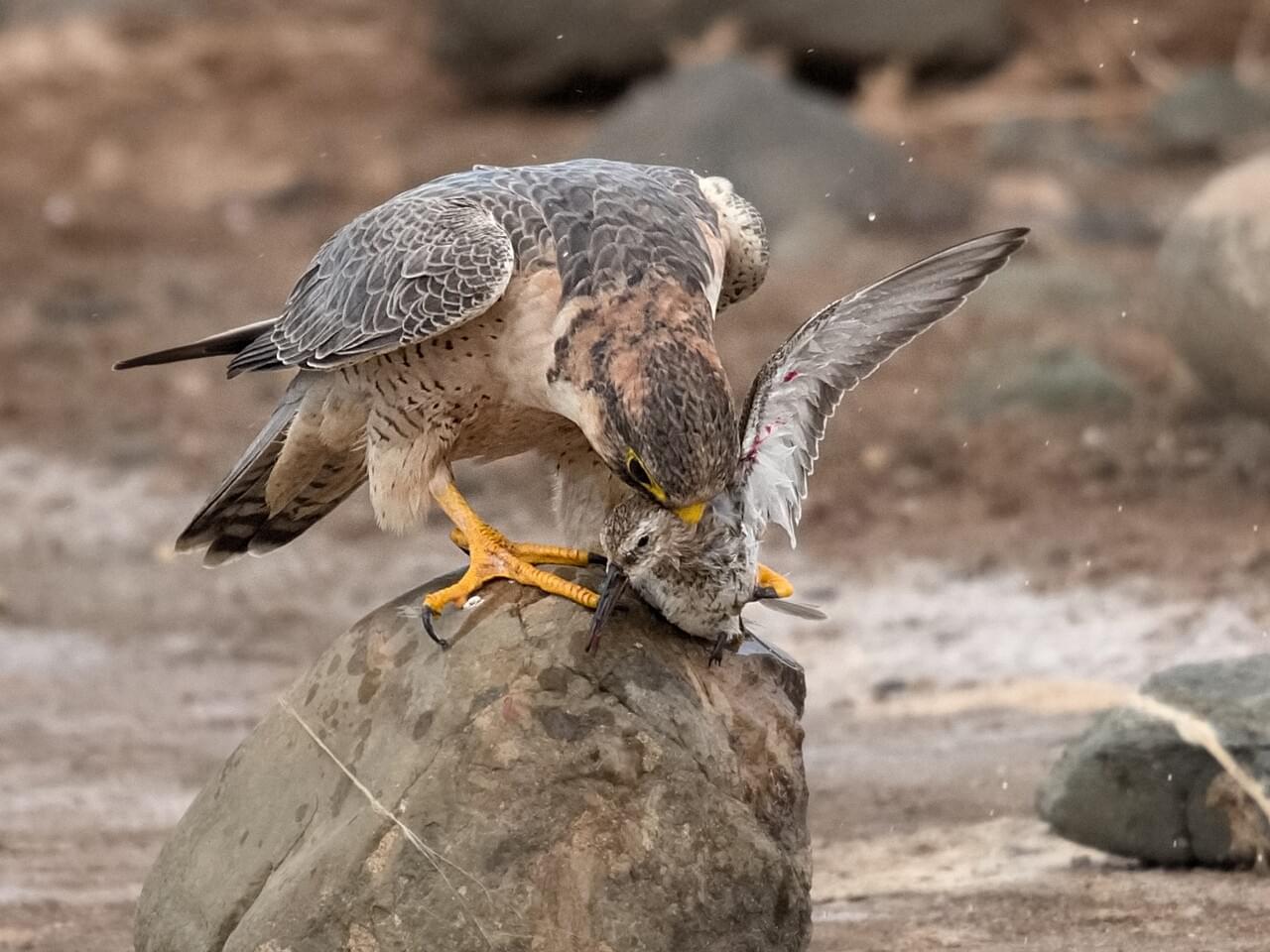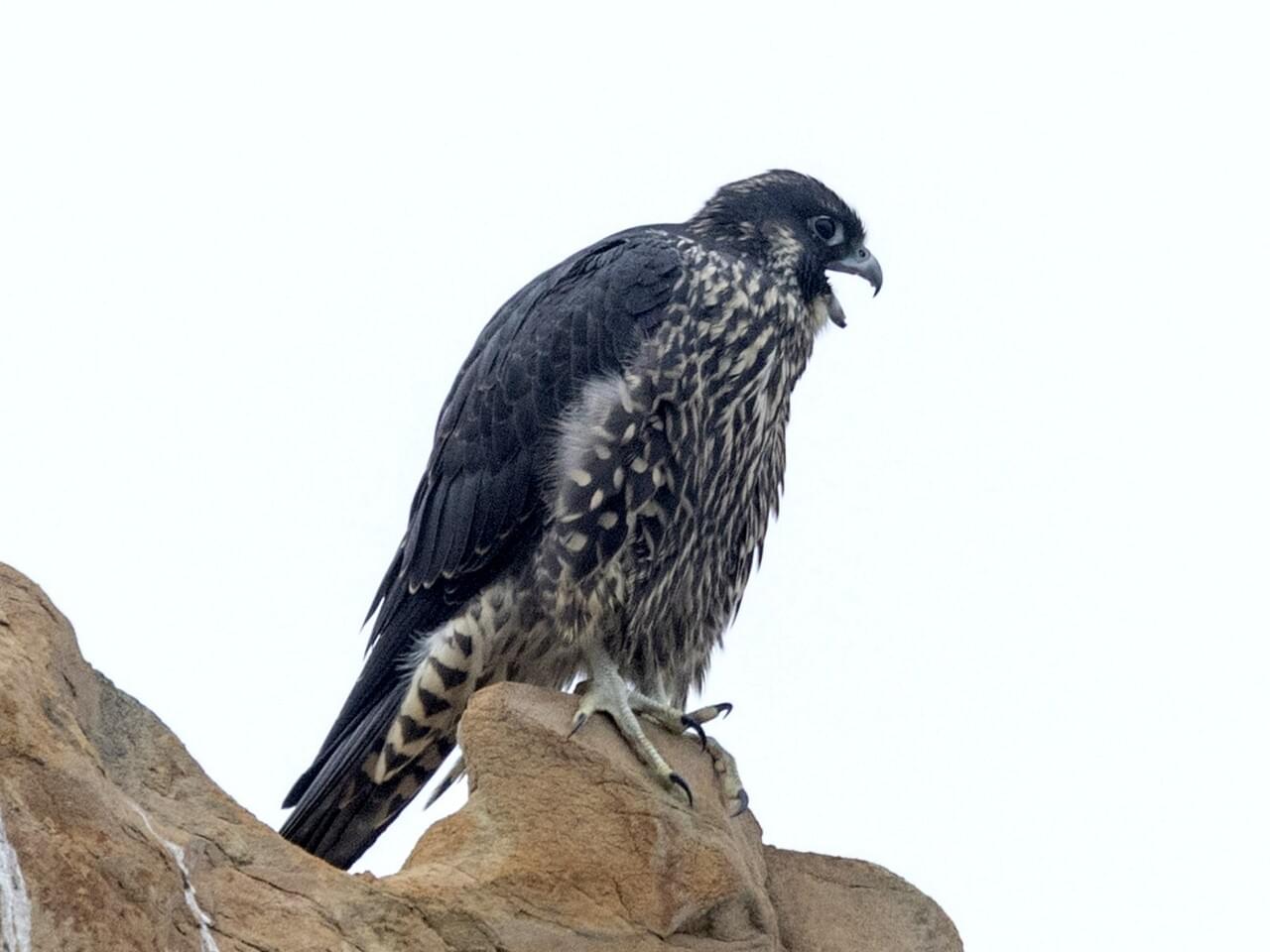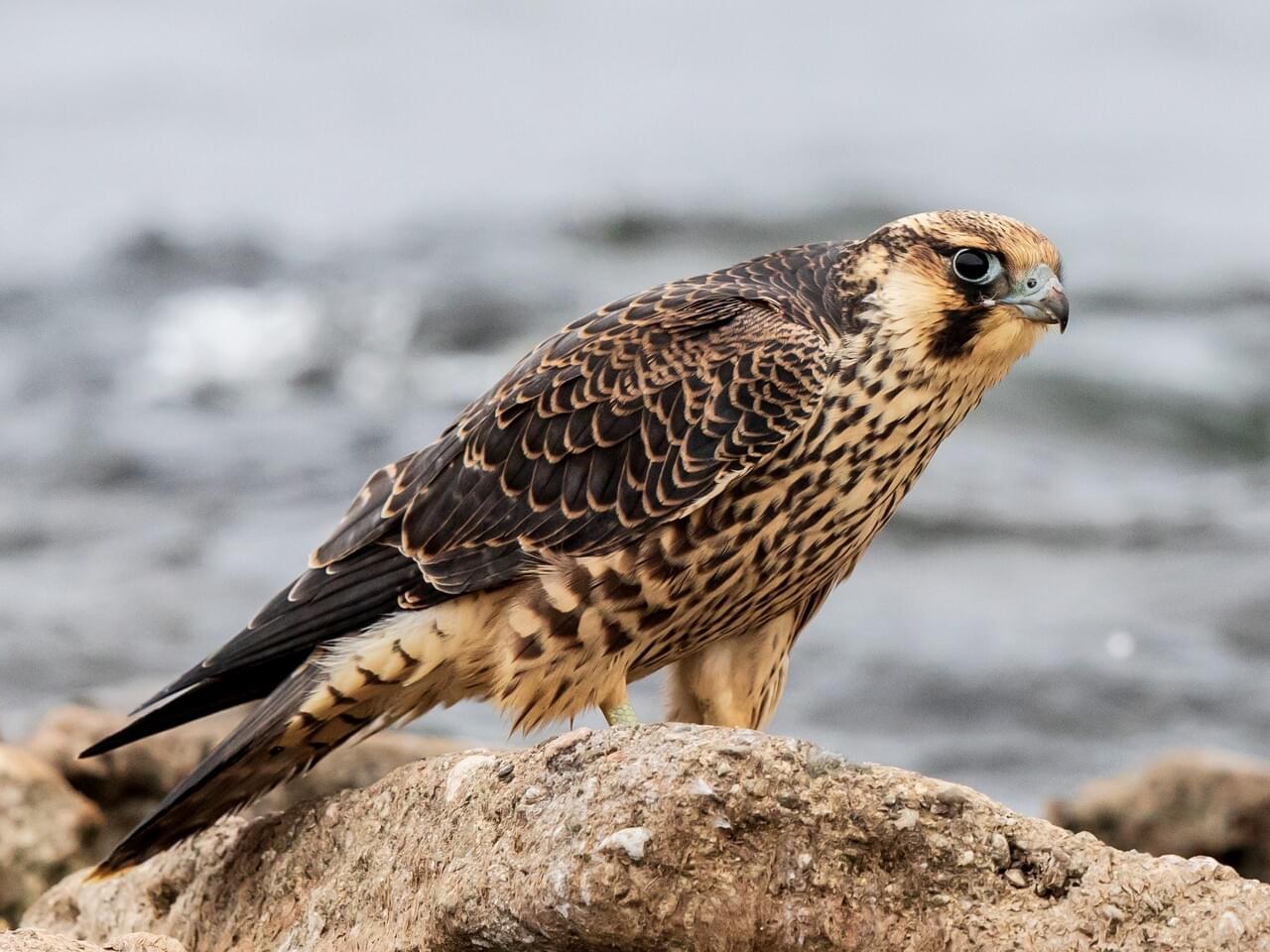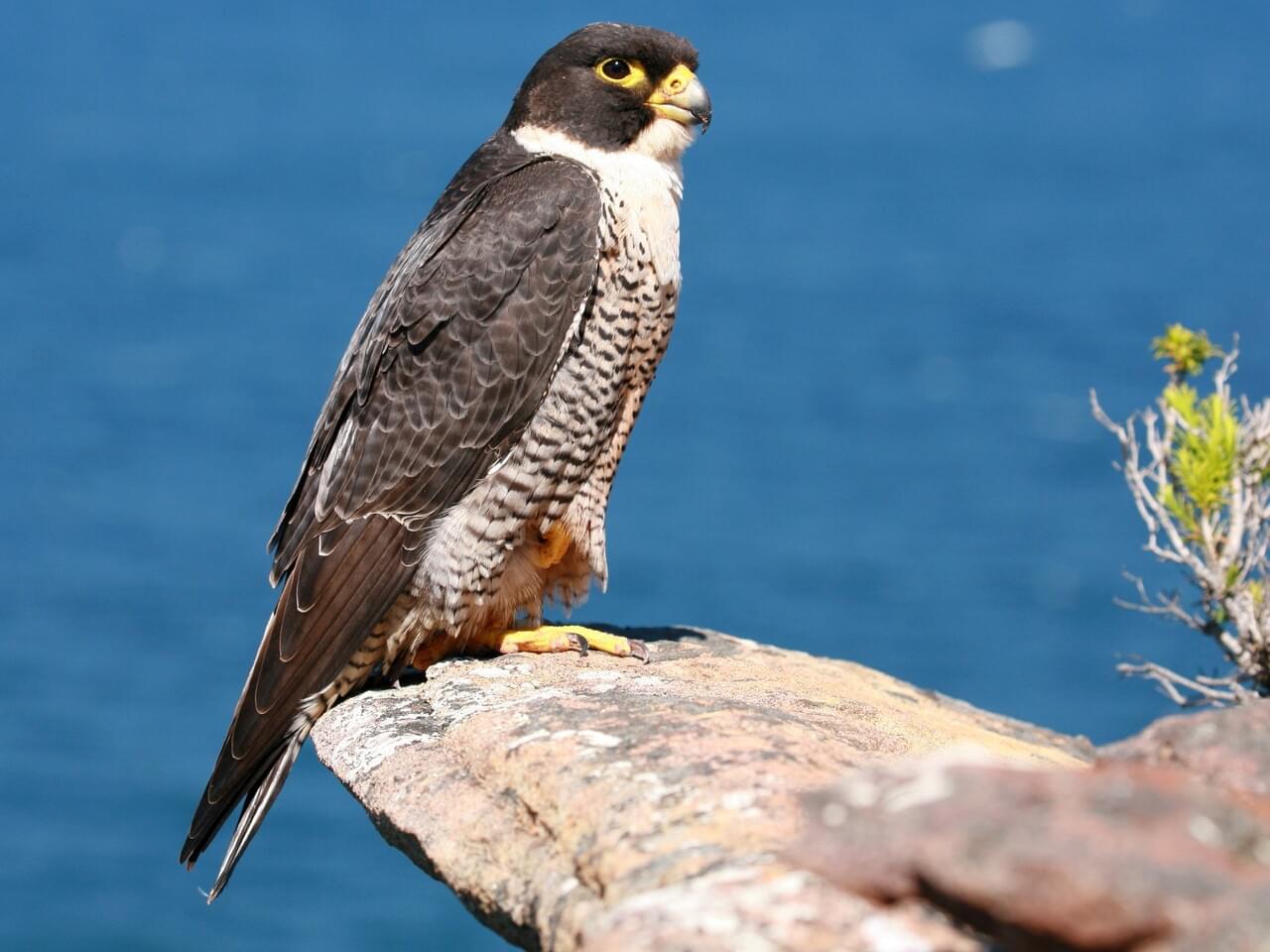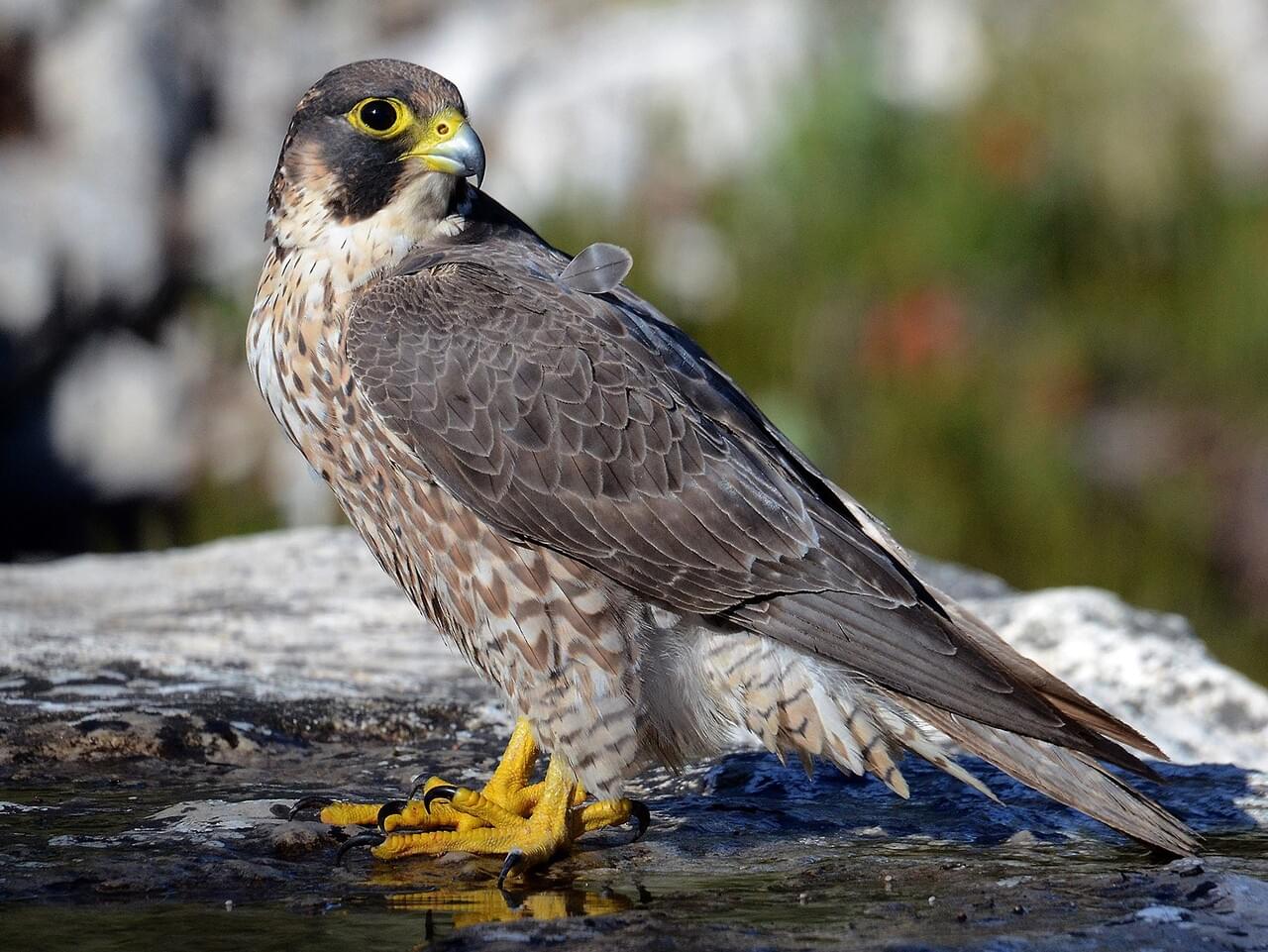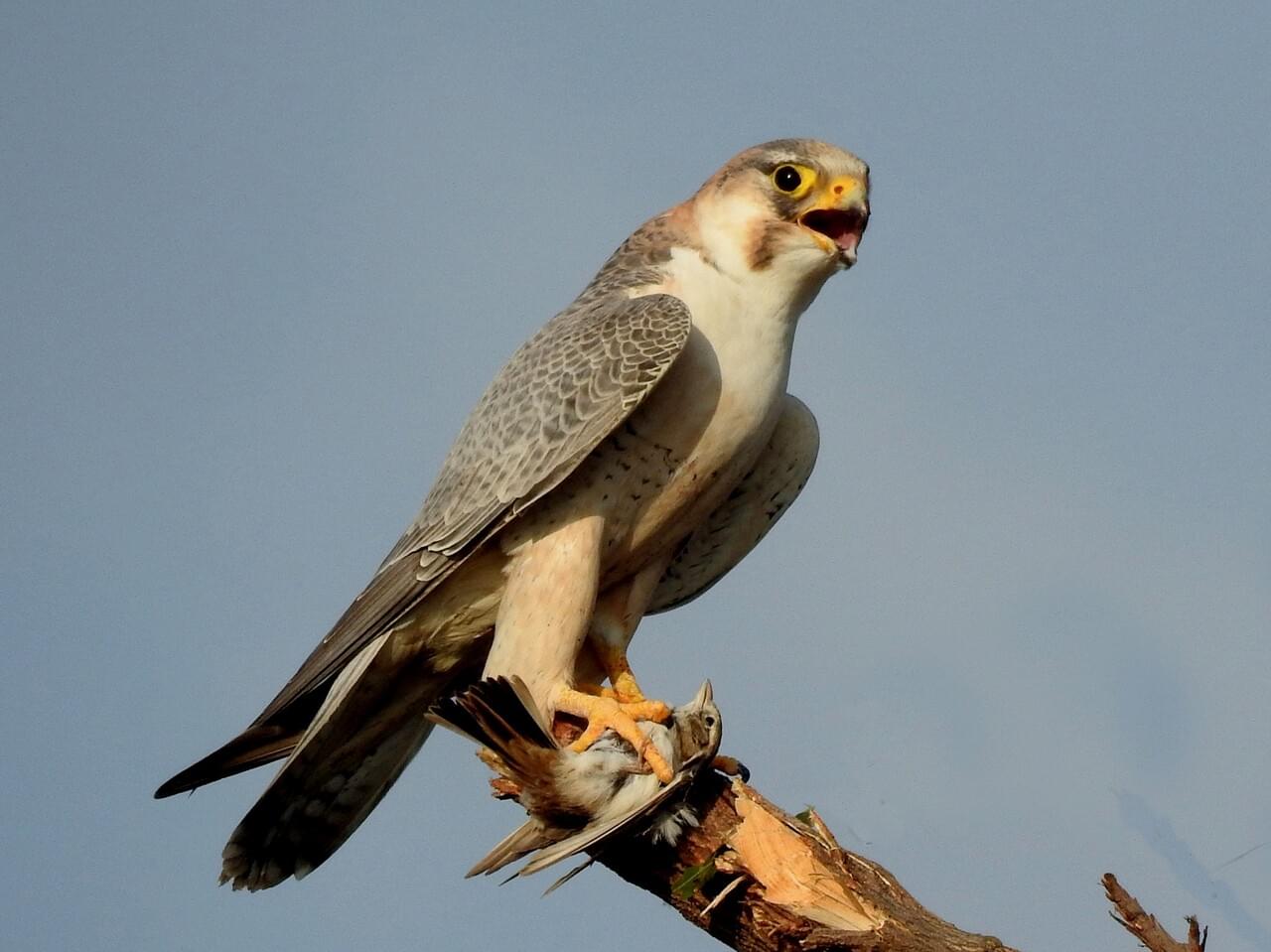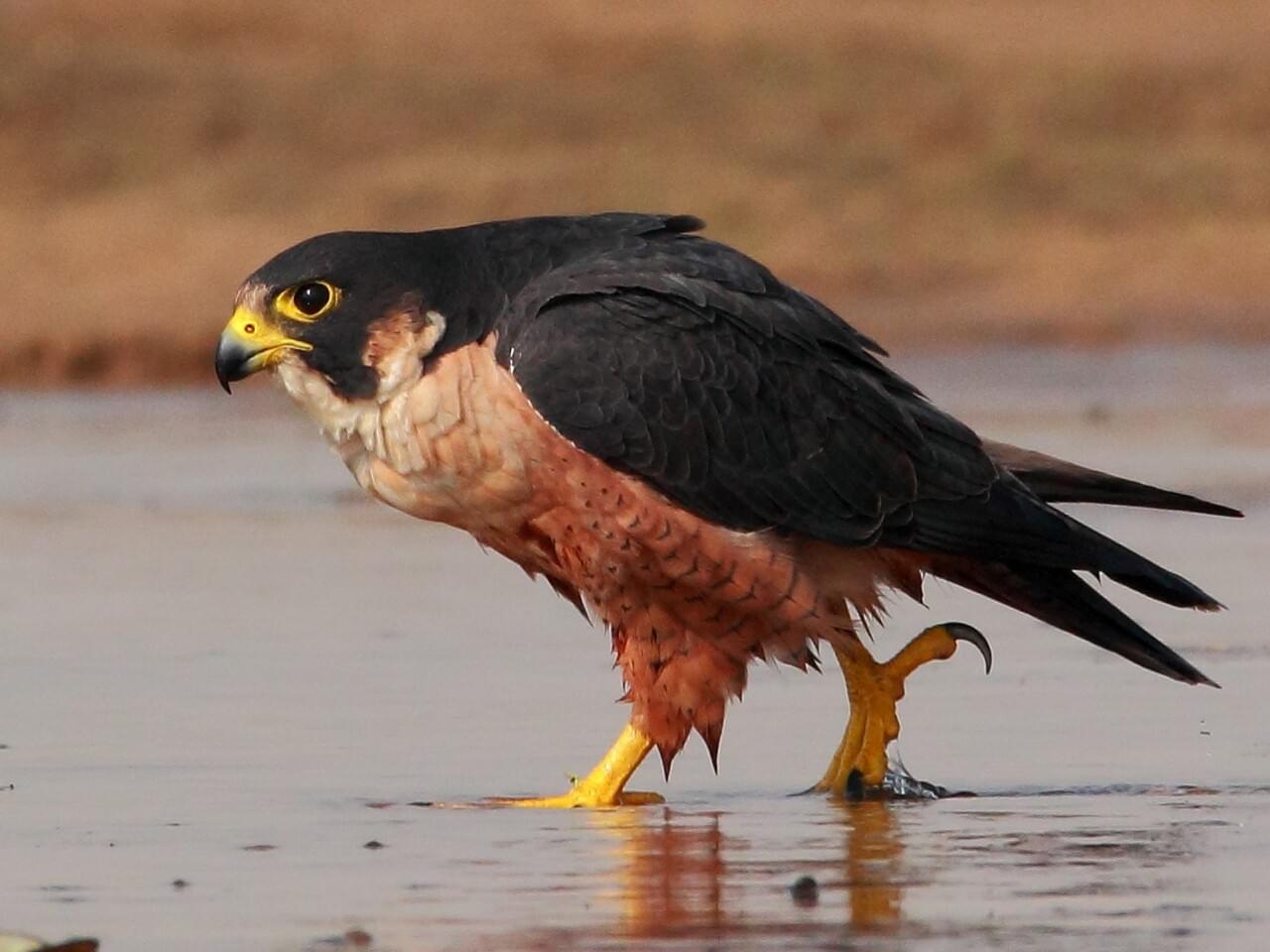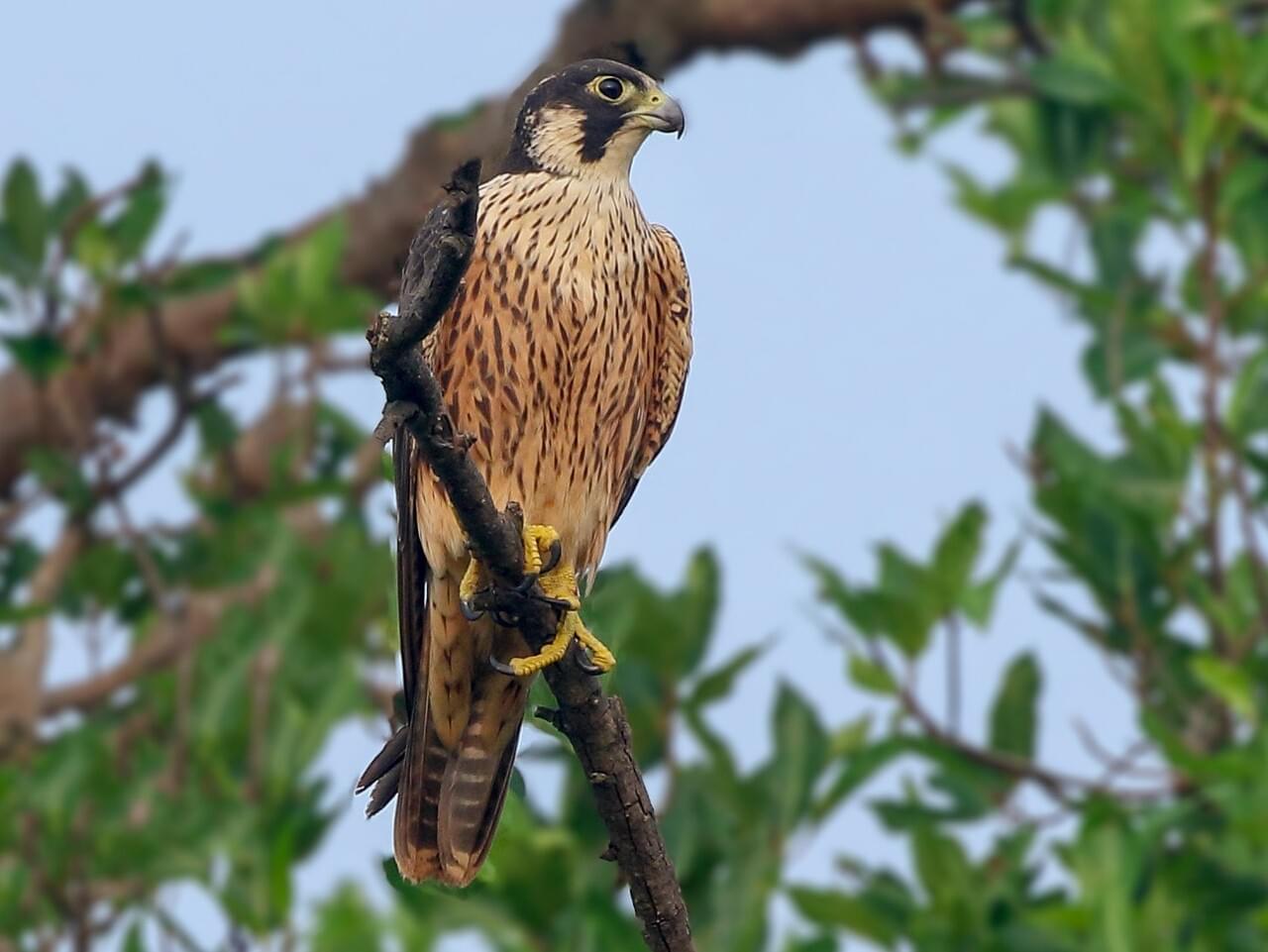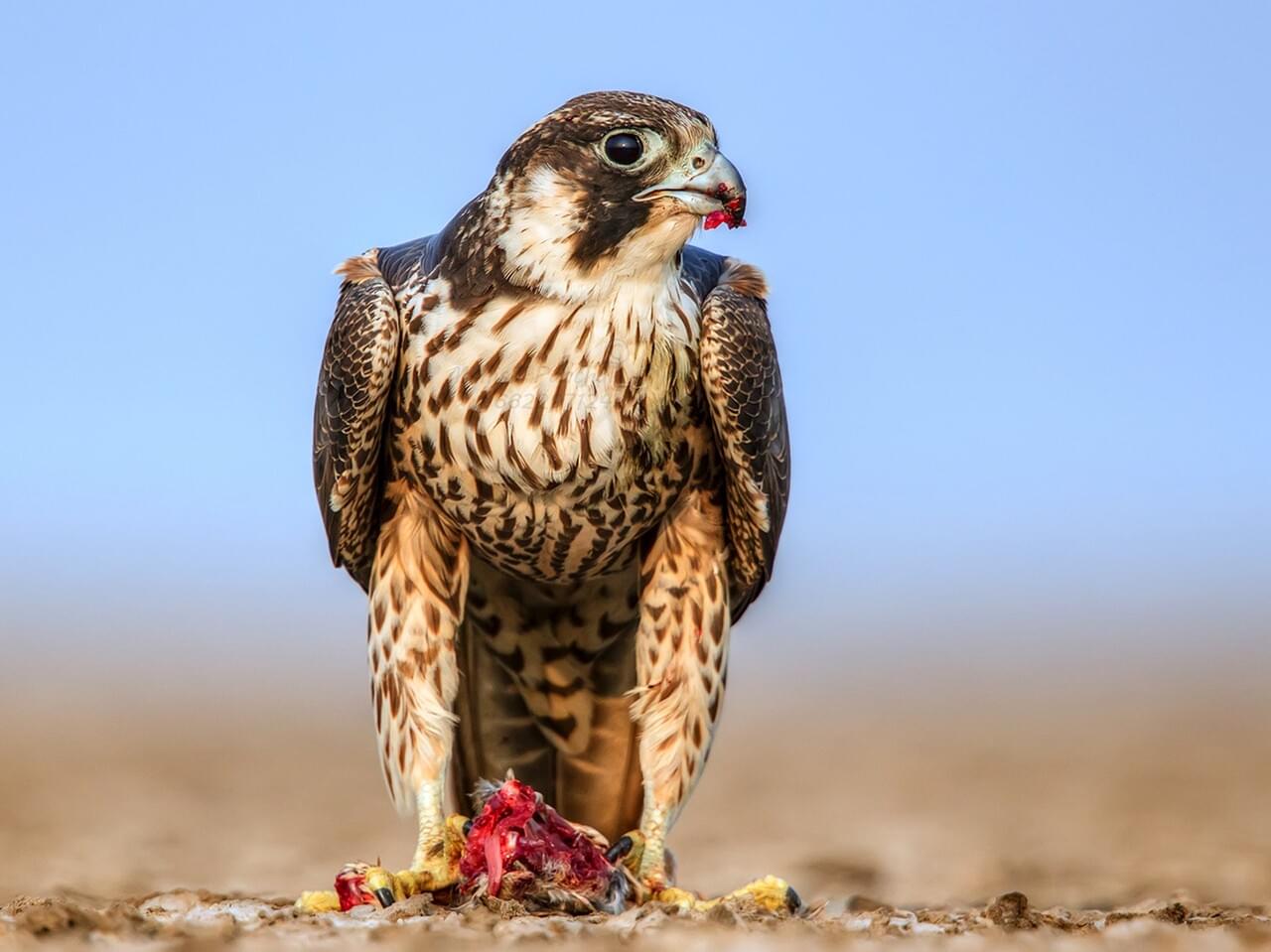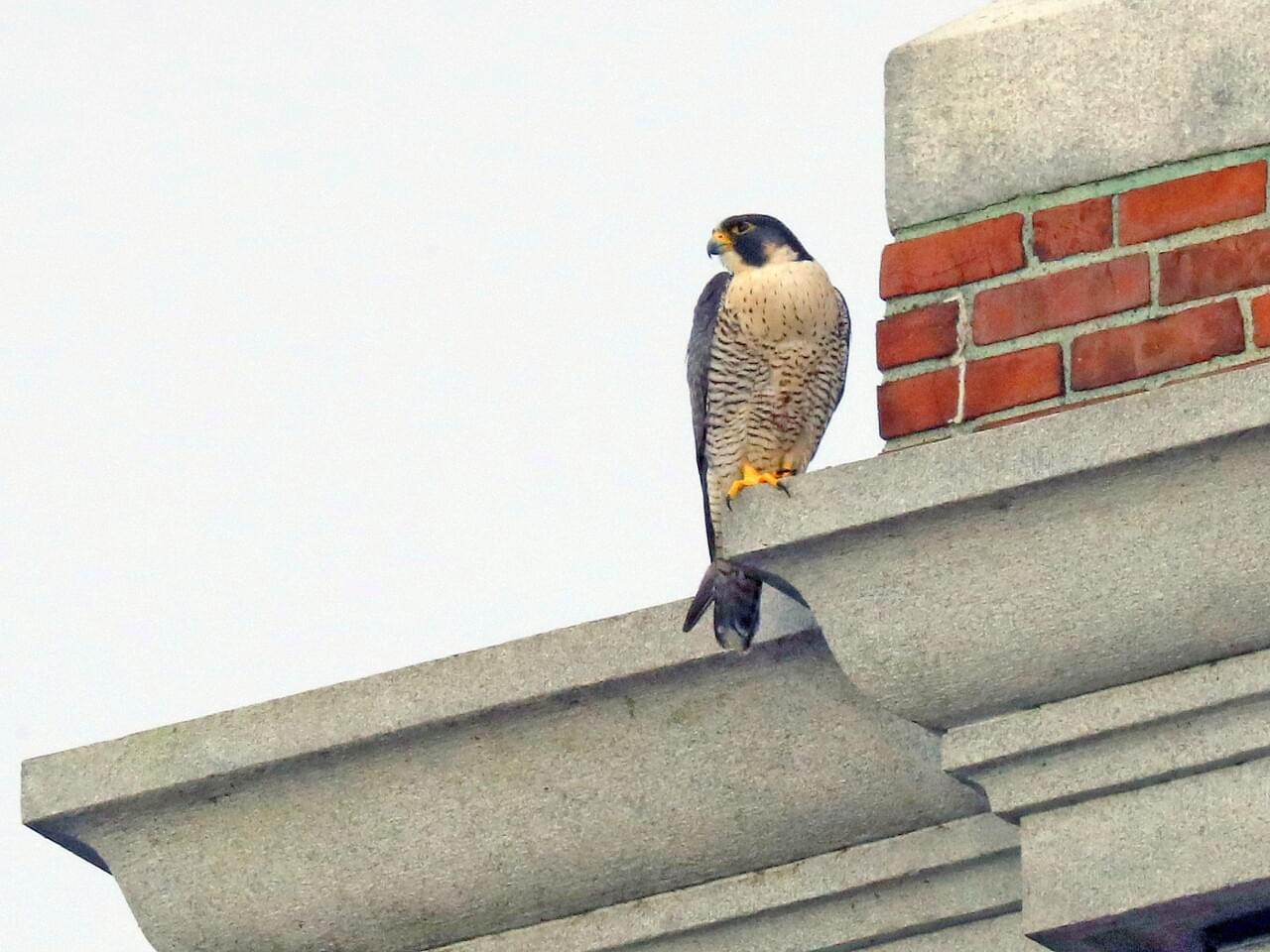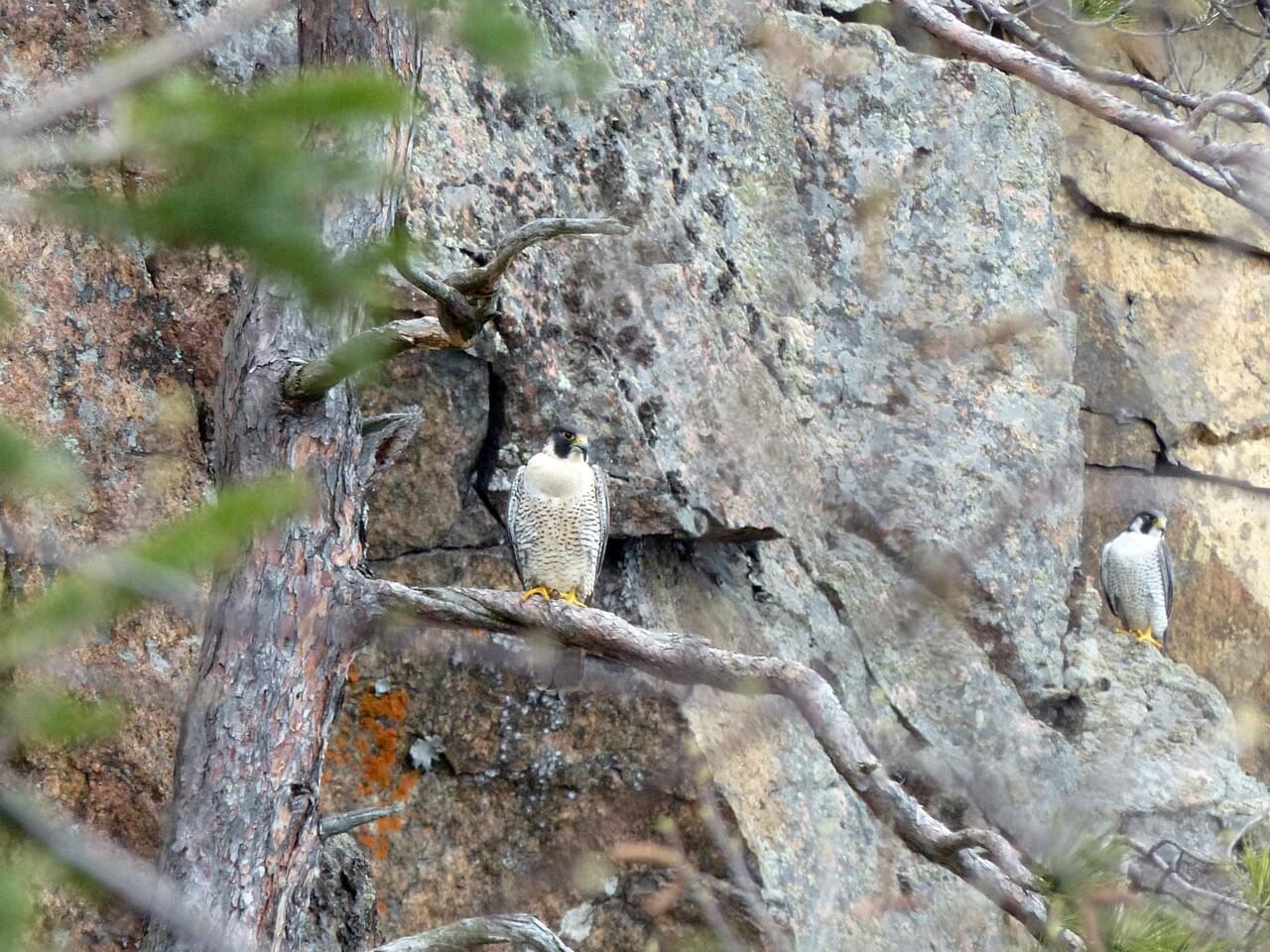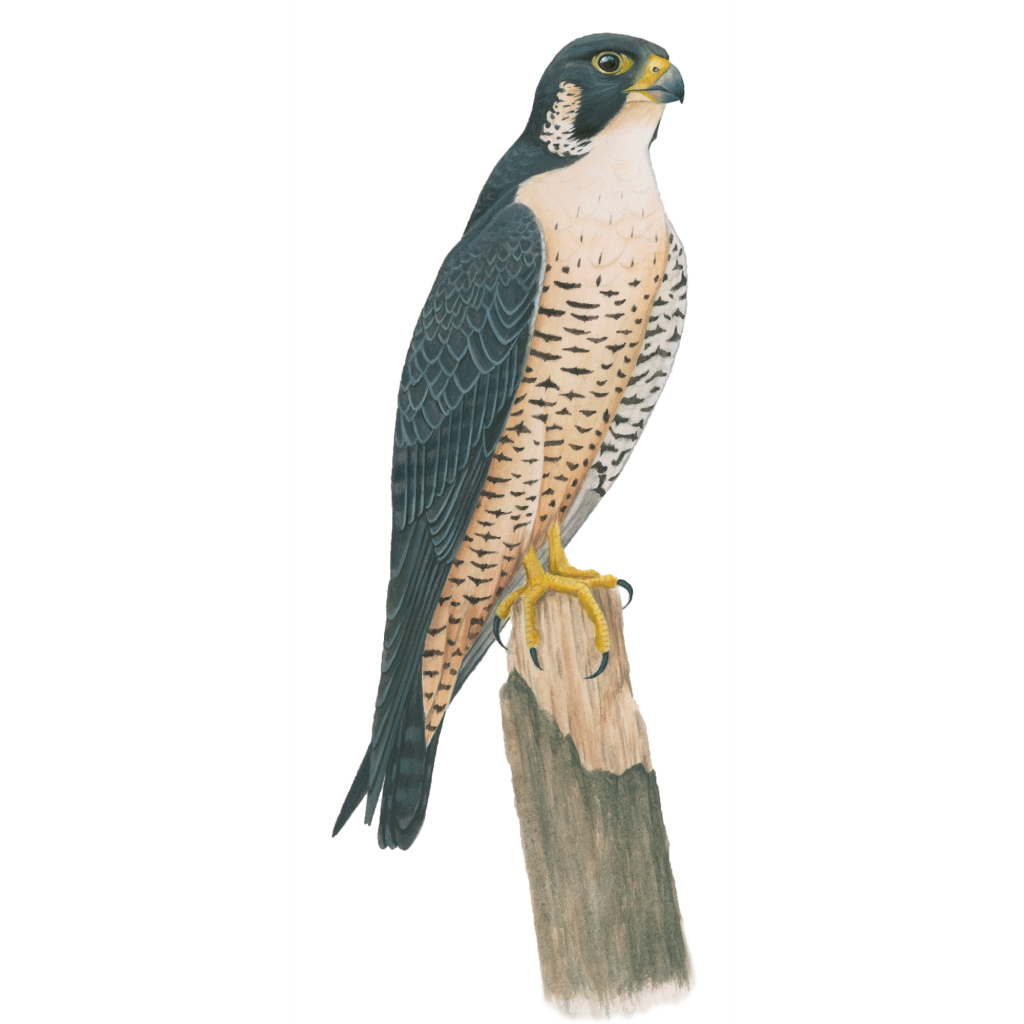 Photo ©
Liz Clayton Fuller
Photo ©
Liz Clayton Fuller
Peregrine Falcon
Main Focal Species
Powerful and fast-flying, the Peregrine Falcon hunts medium-sized birds, dropping down on them from high above in a spectacular stoop. They were virtually eradicated from eastern North America by pesticide poisoning in the middle 20th century. After significant recovery efforts, Peregrine Falcons have made an incredible rebound and are now regularly seen in many large cities and coastal areas.
Range
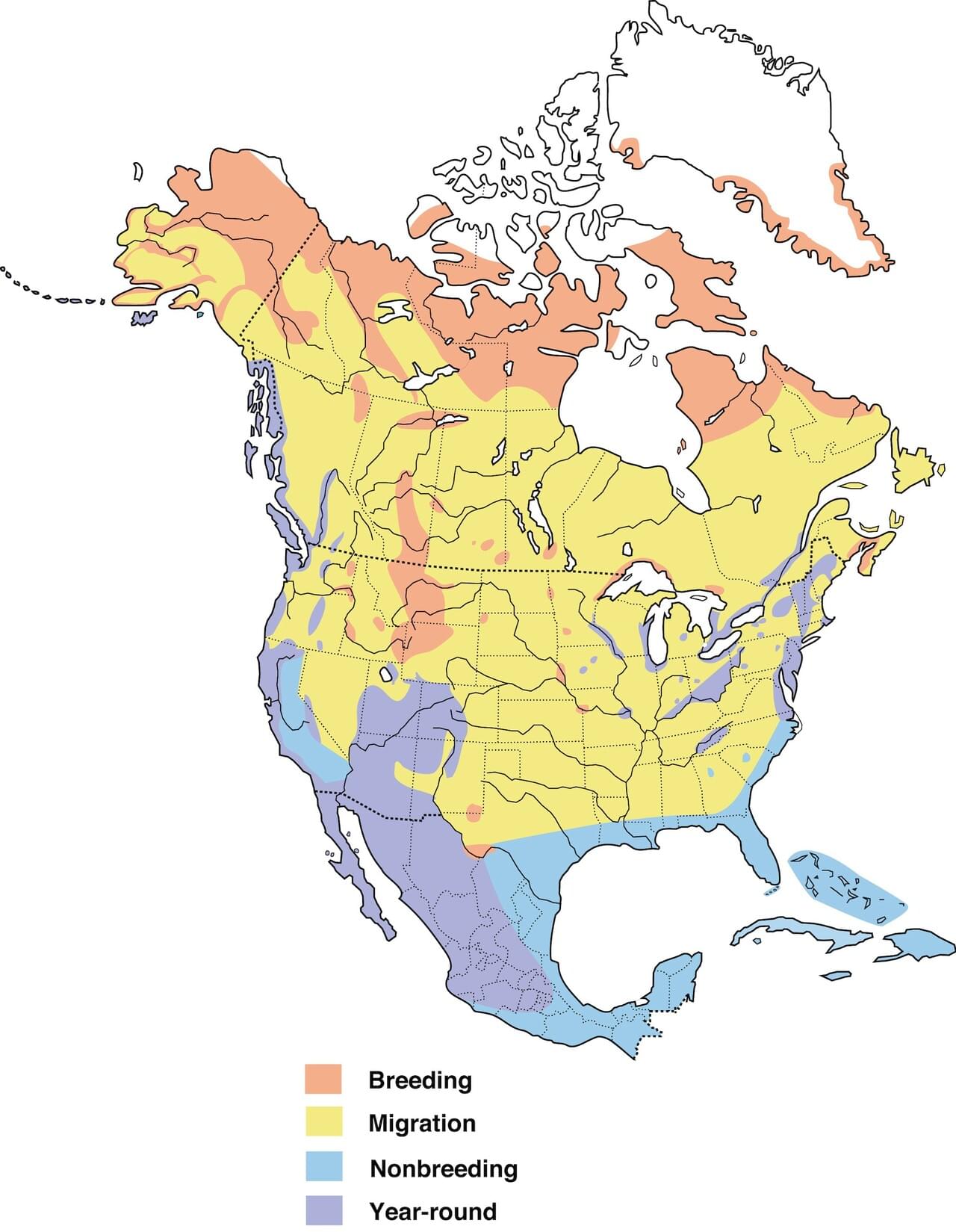
Habitat
The word "peregrine" means "wanderer" or "pilgrim," and Peregrine Falcons occur all over the world. In North America they breed in open landscapes with cliffs (or skyscrapers) for nest sites. They can be found nesting at elevations up to about 12,000 feet, as well as along rivers and coastlines or in cities, where the local Rock Pigeon populations offer a reliable food supply. In migration and winter you can find Peregrine Falcons in nearly any open habitat, but with a greater likelihood along barrier islands, mudflats, coastlines, lake edges, and mountain chains.
Food
Peregrine Falcons eat mostly birds, of an enormous variety—450 North American species have been documented as prey, and the number worldwide may be as many as 2,000 species. They have been observed killing birds as large as a Sandhill Crane, as small as a hummingbird, and as elusive as a White-throated Swift. Typical prey include shorebirds, ptarmigan, ducks, grebes, gulls, storm-petrels, pigeons, and songbirds including jays, thrushes, longspurs, buntings, larks, waxwings, and starlings. Peregrine Falcons also eat substantial numbers of bats. They occasionally pirate prey, including fish and rodents, from other raptors.
Behavior
Peregrine Falcons are very strong fliers and often reported to be the fastest bird in the world. Their average cruising flight speed is 24 to 33 mph, increasing to 67 mph when in pursuit of prey. When stooping, or dropping on prey with their wings closed, it's been calculated that Peregrine Falcons can achieve speeds of 238 mph. One researcher studied trained Peregrine Falcons while skydiving and described their body position while diving at 150 mph and 200 mph. When hunting, Peregrines start by watching from a high perch or by flapping slowly or soaring at great height. Stoops begin 300–3,000 feet above their prey and end either by grabbing the prey or by striking it with the feet hard enough to stun or kill it. They then catch the bird and bite through the neck to kill it. Peregrine Falcons do have other hunting methods, including level pursuit, picking birds out of large flocks, and occasionally even hunting on the ground. Though the Peregrine Falcon is an elite predator, it does have its own predators, including Gyrfalcons, eagles, Great Horned owls, and other Peregrines.
Nesting
Males typically select a few possible nest ledges at the beginning of each season and the female chooses from these. The birds do no nest building beyond a ritualized scraping of the nest ledge to create a depression in the sand, gravel or other substrate of the nest site. Scrapes are about 9 inches in diameter and 2 inches deep.
Appearance
Typical Sound

© Nathan Pieplow
Size & Shape
Peregrine Falcons are the largest falcon over most of the continent, with long, pointed wings and a long tail. Be sure to look at shape as well as size—long primary feathers give the Peregrine a long-winged shape. As with most raptors, males are smaller than females, so Peregrines can overlap with large female Merlins or small male Gyrfalcons.
Color Pattern
Adults are blue-gray above with barred underparts and a dark head with thick sideburns. Juveniles are heavily marked, with vertical streaks instead of horizontal bars on the breast. Despite considerable age-related and geographic variation, an overall steely, barred look remains.
Plumage Photos
Similar Species
Peregrine Falcon is most likely to be confused with Prairie Falcon, Merlin or the rare Gyrfalcon. Of these, the Prairie Falcon has the most similar size and shape, but it's found only in open areas of the West and is less tied to concentrations of shorebirds, ducks, or pigeons. Prairie Falcons are browner than Peregrines, with dark "armpit" patches under their wings. The average Merlin is substantially smaller than a Peregrine Falcon, with a more compact body, shorter wings, and a stockier appearance. They tend to target smaller birds and even dragonflies. Merlins lack the Peregrine's helmeted look and thick mustache or sideburn. The Gyrfalcon is bulkier than a Peregrine Falcon and is very rare in the continental United States. Gyrfalcons can take down larger birds like Herring Gulls or Common Goldeneyes that a Peregrine can’t really handle.
Did you know?!
- The name "peregrine" means wanderer or traveler. The Peregrine Falcon has one of the longest migrations of any North American bird. Some falcons may travel 15,500 miles in a year; that's more than halfway around the world!
- The Peregrine Falcon can reach up to 200 miles per hour when it dives for prey. It is the fastest bird in the world.
- The Peregrine Falcon was nearly exterminated from eastern North America by pesticide poisoning in the middle 20th century, but restoration efforts have made it a regular, if still uncommon sight in many large cities.
